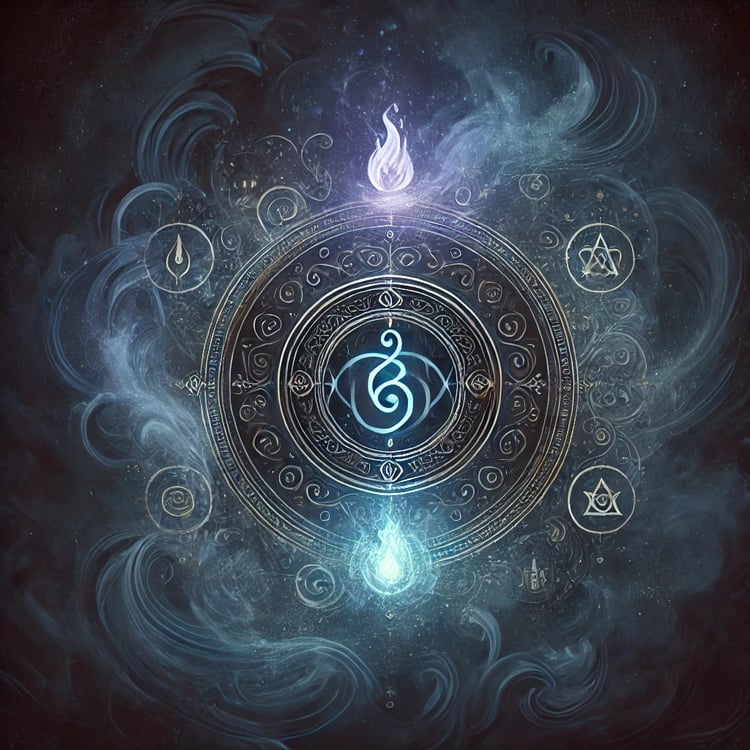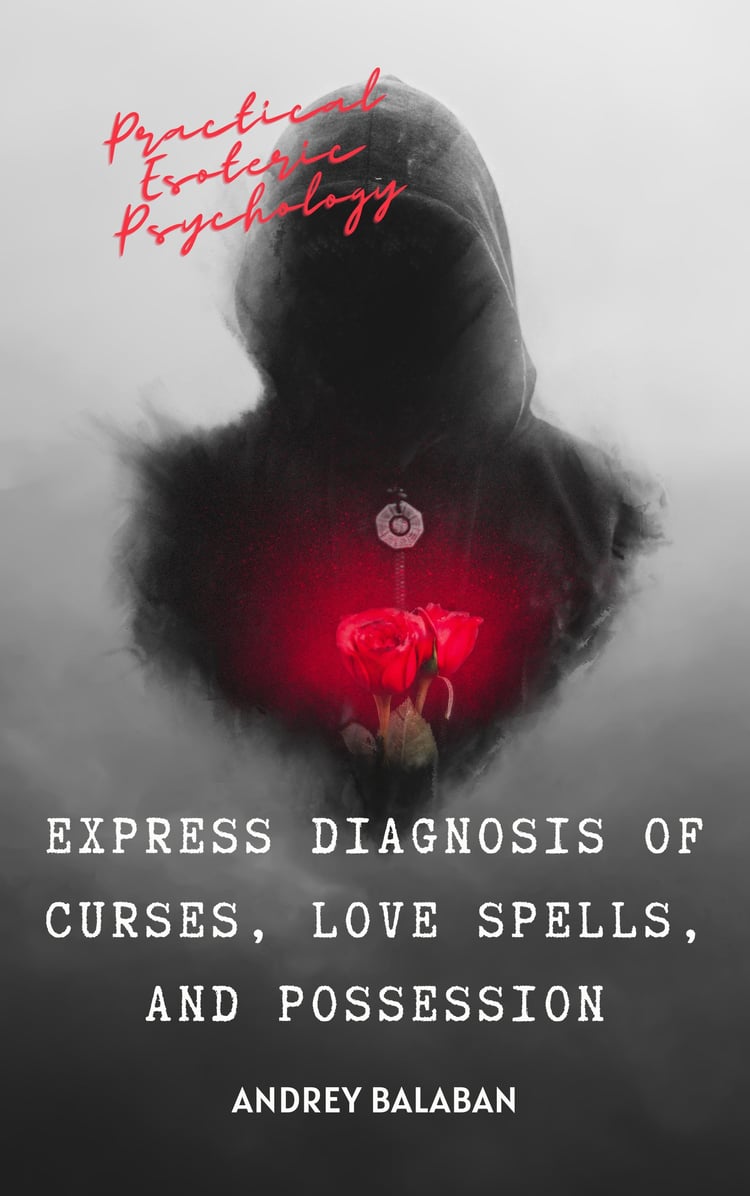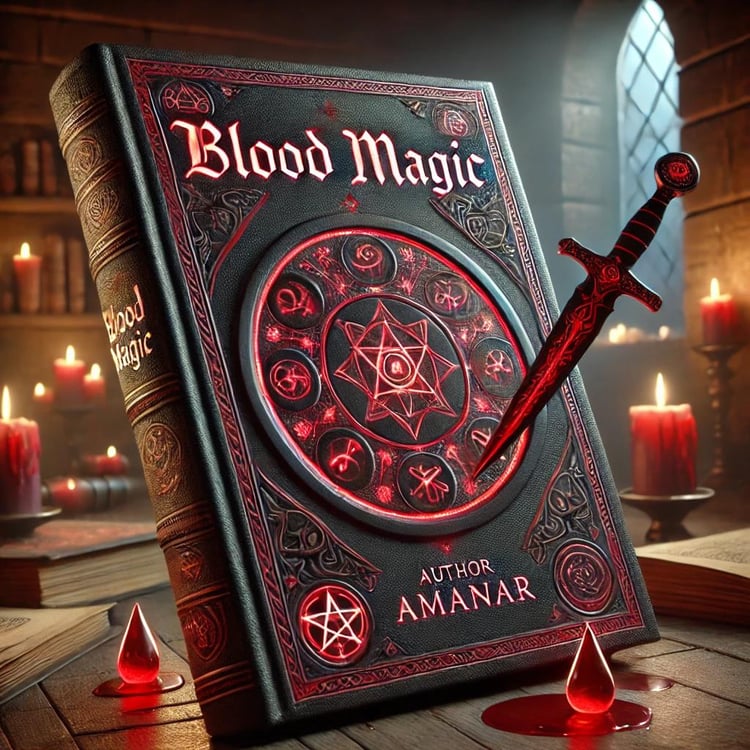
Amanar "Magic of the Departed Ancestors"
Detailed Table of Contents (20 Chapters)
Chapter 1. Introduction to the Magic of the Departed Ancestors
Origins and Essence of the Practices
- Brief historical overview of ancestor cults and veneration of the dead across different cultures
- The role of ancestors in shamanism, folk beliefs, and esoteric schools
Goals and Objectives of the Book
- Intended audience and purpose
- How reading and applying these practices can aid the modern practitioner
Warnings About Risks and Responsible Practice
- Ethical aspects of necromancy and working with spirits
- Personal safety and psychic hygiene for the practitioner
Chapter 2. Fundamentals of the Esoteric Tradition of Ancestor Veneration
Definition of “Magic of the Departed Ancestors”
- What this concept encompasses
- How it differs from classic necromancy
Key Philosophical Concepts
- Notions of the soul’s immortality in various occult systems
- Views on the connections between the worlds of the living and the dead
The Importance of Working with Ancestral Roots
- Energetic transmission through generations
- The power of heritage and the influence of ancestors on the practitioner’s destiny
Chapter 3. Historical Origins and Evolution of the Cult of Death
Ancient Religious Systems
- Egyptian cult of Osiris, mummies, and the Book of the Dead
- Sumerian-Akkadian ideas about the afterlife
- Greco-Roman rituals of hero and ancestor worship
Medieval Europe and the Formation of Necromancy
- Christian attitudes toward the realm of the dead and forbidden practices
- Alchemical pursuits of immortality and contact with spirit realms
Eastern Traditions
- Chinese and Japanese ancestor veneration (lineage systems, respect for elders)
- Indian and Tibetan rituals, Bardo Thodol
Chapter 4. Spiritual Entities: The Spectrum of Forces in the Afterlife
Who Are the “Departed Ancestors” in the Context of the Occult
- Ancestral egregores and collective memory
- Distinction between personal ancestors and “common” or ancient forebears
Types and Ranks of Spirits
- Benevolent and malevolent spirits, ghosts, and restless souls
- Ancient gods, demigods, and guardians of tombs
The Structure of the Afterlife
- Concepts of hierarchy and laws of the other plane
- Pathways connecting the worlds
Chapter 5. Sacred Languages and Written Symbols
The Magical Significance of Ancient Languages
- Latin, Greek, Egyptian, Sumerian, Hebrew, and other examples
- The role of vibration and sound in incantations and ritual formulas
Writing Systems and Glyphs
- Runes, hieroglyphs, paleo-alphabets
- The power of symbols in the creation of talismans and seals
Creating and Using Magical Texts
- Writing incantations on parchment, stone, or metal
- Methods of “activating” texts (consecration, incense, spell formulas)
Chapter 6. Ritual Preparation and Protection of the Practitioner
Energetic Hygiene and Purification
- Mental and physical cleanliness: diet, purifying baths, prayers
- Visualization techniques to strengthen the aura
Altars and Sacred Spaces
- Choosing the location and orientation
- Ritual tools (dagger, wand, chalice, censer, etc.)
Protective Seals and Sigils
- Using ancient symbols and pentagrams
- Employing protective amulets and talismans
Chapter 7. Contact with the World of the Dead: Basic Methods
Meditative Practices
- Entering altered states of consciousness for connecting with ancestors
- Techniques of immersion (deep breathing, mantras, rhythmic sound)
Trance Work and Dreams
- Lucid dreaming and guided dream journeys
- Creating “gateways” between worlds with music, dance, or monotonous rhythms
Addressing Spirits
- Correct formulation of invocations
- Specific requests, intentions, and terms of cooperation with the dead
Chapter 8. Ceremonies in Honor of Ancestors: Structure and Sequence
Preparation for the Ceremony
- Choosing the right time (lunar phases, astrological correspondences, days of remembrance)
- Selecting ritual items, attire, and incense
Main Stages of the Rite
- Opening the circle and inviting spirits
- Offering gifts and prayer formulas
- Closing and giving thanks
The Role of Group Rituals
- Collective energy and shared focus
- Traditions of family and ancestral gatherings
Chapter 9. Ancient Funerary Rites and Their Magical Power
Burial Rituals in Different Cultures
- Egypt, Mesopotamia, Scandinavia, China
- Special magical items placed in the grave
The Significance of Posthumous Texts and Scrolls
- The Egyptian Book of the Dead, Tibetan Bardo Thodol
- Commemorative texts and formulas to ease the passage
The Sacred Bond Between Burial Sites and Ancestral Power
- Guardians of cemeteries, larvae, the nature of burial mounds
- Ritual processions and protective circles
Chapter 10. Necromantic Tools and Talismans
Creating and Consecrating Magical Items
- Wands, staves, “bone” implements
- Methods of purification and charging with energy
Ancestor Amulets
- Pendants bearing ancestral symbols
- Using hair, bones, or ashes of the deceased
Mirrors, Crystals, and Other Mediums
- Black mirrors for contacting the dead
- Crystals that aid in perceiving astral images
Chapter 11. The Language of Spells and Formulas for Communicating with Ancestors
Pronunciation in Ancient Languages
- Importance of correct phonetics and vibrational quality
- Simple phrases and complete ritual texts
The Role of Intention When Uttering Words
- Energetic empowerment of the spell
- Creating personal formulas and adapting them to one’s own egregore
Key Phrases and “Code Words”
- The role of symbols inaccessible to non-initiates
- Practice of a secret language within a ritual group
Chapter 12. Sacrifices and Offerings
Symbolic and Real Sacrifices
- The significance of blood, wine, bread, fruits, and incense
- Moral code and limits regarding sacrifices
General Principles for Safe Work with Offerings
- Energetic gratitude and concluding the ritual
- Disposal or storage of leftover sacrificial items
Ritual Feasts
- “Banquets” with spirits: distribution of food and drink
- Folk and occult traditions of shared meals
Chapter 13. The Purpose and Potential of Necromantic Practice
Healing Ancestral Traumas
- Working with the karma of one’s lineage and ancestral memories
- Rites of forgiveness and release
Divinations and Prophecies
- Using ancestral spirits for divinatory practices
- Warnings, advice, and glimpses of the future
The Power of the Bloodline and Personal Transformation
- Strengthening connection with family traditions
- Personal insight and enhancement of individual energy
Chapter 14. Dangers, Temptations, and Taboos
Precautionary Measures
- Restrictions for the unprepared
- Emotional state control and psychic stability
Dark Aspects of Working with the Dead
- Manipulation and exploitation of spirits
- Potential consequences for the practitioner: hauntings, possession
Forbidden Rituals and Etiquette Breaches
- Desecrating graves and summoning hostile entities
- Possible karmic and magical repercussions
Chapter 15. Methods of Cleansing and Releasing Negative Influences
Rituals of Banishment and Purification
- Using incense, herbs, candles
- Sound methods (bells, drums, mantras)
Cutting Unwanted Ties
- Rites with ribbons, threads, or knots to sever attachments
- Ancestral acknowledgment and confirmation of release
Restoring Energetic Balance
- Meditations for rebuilding strength and harmony
- Regular self-analysis and reflection
Chapter 16. Training and Succession in Ancestor Magic
Passing Knowledge from Teacher to Student
- Oral tradition and secret manuscripts
- The role of personal initiation through ritual
Spiritual Mentors and Keepers of the Tradition
- Selecting a mentor or guardian of one’s lineage
- Connection with a school’s egregore
Forming Your Own Lineage of Power
- Creating a new egregore for future generations
- Responsibility for the knowledge passed down
Chapter 17. Special Ceremonies for the Festivals of the Dead
The Calendar of Sacred Dates
- Samhain, Day of the Dead, parental commemorations, and other annual observances
- Choosing auspicious times for ritual
Unique Rites of Remembrance
- Group and public processions, bonfires, masks
- Rituals involving candles and special incenses
Cultural Differences and Particularities
- Latin American (All Saints’ Day), Asian traditions (Ghost Festival)
- Blending national customs with individual magical practice
Chapter 18. Advanced Practice: Complex Rituals and Techniques for Safe Interaction
Creating Temporary Portals
- Using mirrors, spirals, pentagrams
- Combining astral and physical work
Summoning High Entities of the Afterlife
- Communication with “great ancestors” (saints, legendary magicians, demigods)
- Special incantations and preparation of “altars of sacrifice”
Synthesis of Various Occult Traditions
- Merging Hermetic, Kabbalistic, and folk methods
- Creating a unique syncretic system
Chapter 19. Practice in Everyday Life
Energetic Support from the Bloodline
- Daily prayers, meditations, and calls to ancestors
- Using minor ancestral talismans (photos, relics)
Symbolic Gestures and Habits
- Traditions of keeping ancestor memory alive in daily life
- Simple rites that maintain the connection
Everyday Magic of Honoring the Dead
- Maintaining cleanliness at graveyards and memorial sites
- Charitable deeds dedicated to the deceased
Chapter 20. Conclusion and Prospects for the Development of the Tradition
Summary of Key Ideas
- Main conclusions on the meaning and role of the “Magic of the Departed Ancestors”
- Synthesis of acquired experience and possible paths for further study
The Ethical and Spiritual Responsibility of the Practitioner
- Awareness of the consequences of any magical act
- Reverence for ancestors as part of the evolution of consciousness
A Glimpse into the Future
- The development of new directions in necromancy and ancestral magic
- Harmonizing traditional and innovative approaches










